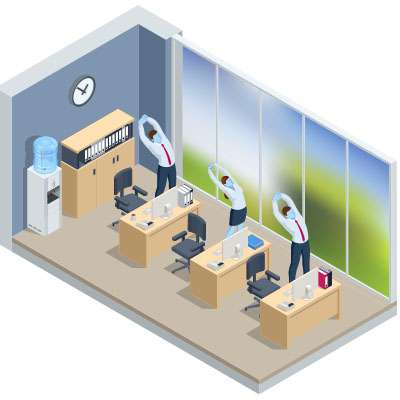Macro Systems Blog
Technology can be expensive to buy and maintain, but it can get a whole lot more expensive if you aren’t cognizant of how your IT dollars are being spent. Long ago are the days when companies could get their technology for a song and it would work for years at a time. Modern business technology has to build a more efficient workplace, as capital is harder to come by today than it has been for quite some time. Listed below are three ways you could be wasting your technology budget and what you can do to ward against it.
The IoT (the Internet of Things) is a fascinating technology, as it exemplifies just how much can be accomplished when Internet connectivity is used to augment the capabilities of otherwise “dumb” devices. Alas, as fascinating as it is, the IoT is also infamous for its security issues, a reputation that attackers have been perpetuating as these devices grow more common.
Data storage is one of those things in business that only is a problem if you don’t have enough of it. It used to be a considerable challenge for businesses, but modern data storage prices are dropping by 20-to-30 percent annually and it has made it feasible for any business to start using cloud computing to store business data. This month we will take a look at the benefits of cloud storage and how there is only one major problem with it.
We’ve been examining the concept of procrastination in recent weeks - why we do it and how it often manifests itself in business processes. For our final few parts, we’ll be focusing on how you can stop procrastinating by utilizing both quicker, short-term tactics and long-term, sustained changes. Listed below are some short-term tactics.
“I just wanted to take a second to thank the sponsor of this video, [insert VPN provider here], for supporting the channel!”
If you’ve been on YouTube in the past few years, this message likely sounds pretty familiar. Virtual private network providers have been taking advantage of the trend of influencer marketing to spread awareness of their largely obscure product, usually offering an enticing deal. While we have and will continue to promote the use of a VPN for business purposes, we wanted to clarify something here: these are not the VPNs we’re saying you should use.
It seems that you can’t turn your head these days without seeing artificial intelligence being incorporated into some software or platform. That being said, many leaders in the technology space have conveyed their concerns about the “profound risks to society and humanity” that AI poses, outlined in an open letter.
We recently started to explore the concept of procrastination as a means of understanding it better, and potentially, getting better at not doing it. Last time, we touched on a few ways that procrastination can potentially manifest, so it only made sense to us that we would continue pulling that thread and try to help you identify how you tend to procrastinate more specifically.
You’re probably familiar with the concept of a mission statement, particularly in terms of your business as a whole. However, did you know that you don’t need to stop there? You can—and we’d argue, should—establish more specific organizational missions for your different departments. Consider how you can benefit from creating a mission for your IT team to uphold throughout its operations, and how you might go about doing so.
When your technology gets older it has a tendency to become less effective. This can be a major roadblock to organizational productivity and have devastating effects on your business. These include major downtime events and overwhelming inefficiency. Listed below is a look at some ways that you know that it’s time to focus on reinvestment.
“Never put off until tomorrow what you can do today.” It’s good advice, as well as some of the easiest and most tempting advice to ignore. Procrastination is one of those things that we all assume we understand, but we wanted to take a bit of time to explore it in greater detail…and figure out how we can all work to resist it.
Business is filled with all types of relationships, and some of them are very challenging. Consider for a minute how challenging some of the interactions you have with customers are; or some of the vendor conversations that happen; or some of the give-and-take you get from your employees. Sometimes it is hard to believe that without these people, your business would be a complete flop. Listed below is a break down of how sometimes the relationships you forge in business are the key to things breaking your business’ way.
We tend to focus most of our attention on how to maintain your organization's technology over time. This only makes sense—we are a managed service provider, after all—but that being said, your IT is not the only element that needs to be properly taken care of. It is just as imperative that you and your team members are physically able to focus on work…something a desk job doesn’t always help.
Having data redundancy may sound like a bad thing. After all, redundancy is usually viewed as a reason for inefficiency. In the case of having your data and computing environments backed up, you are trying to build redundancy. Listed below is a look at some situations that a business can run into should they neglect to have a proper backup.
A business’ operations are heavily influenced by the quality of its communications. On the other hand, the overwhelming number of options that are available today can make it challenging to decide how to invest in your technologies. How can you identify which of your options are right for your business needs when the time comes to upgrade your communications?
Compliance is an imperative element of many businesses’ requirements, with severe penalties as a consequence if the prescribed standards are not met. Even more critically, most compliance requirements and regulations are put in place for the welfare of not only the business, but its clientele as well. This makes it important to know which apply to your business, and how to meet them fully.
The smartphone is one of the best inventions of the 21st century; you can tell that by their adoption rates. These devices have completely changed the way people communicate, recreate, and work. They are so new that it’s funny to think that maybe in the very near future, these devices will be nothing more than trash in the world’s landfills. That being said, what comes after the smartphone?
Information technology is a constantly changing industry, with practices shifting all the time. As a result, anyone you have working on your company’s IT should be actively seeking out various certifications to confirm that they are keeping up to date on modern trends and standards. To help you accomplish this, we’ve put together a brief list of valuable IT certifications that your IT personnel—whether they’re in-house employees or outsourced professionals—should have.























